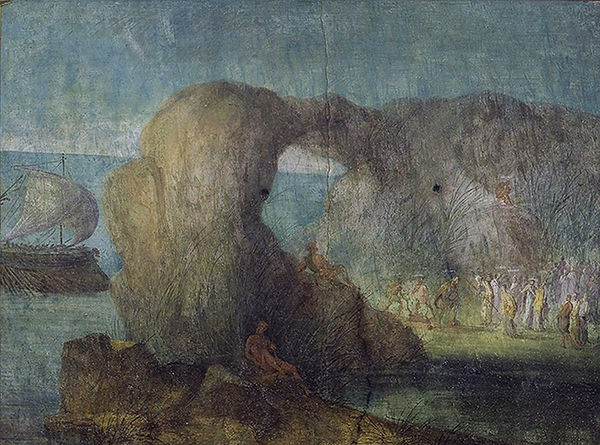<A>
Masaccio (bodies bathed in air): *
The Holy Trinity, with the Virgin and Saint John and donors, 1427, fresco, located in the Dominican church of Santa Maria Novella, in Florence.

<B>
Piero della Francesca (bodies bathed in air):
The Risen, 1463-65, fresco of the resurrection , Palazzo della Residenza, Sansepolcro, Tuscany, Italy.

<C>
Rembrandt: *
portrait of an old man,roughly worked out. The brushstrokes are thick, Few fine details are provided. In particular the face leaves much for interpretation. There is not a trace of white to be found in the eyes, the beard consists of repeated quick applications of grey paint & the right side of the face is so dark that it almost fades into the background. This is an impressionist painting, painted about 200 years before the impressionist movement began.
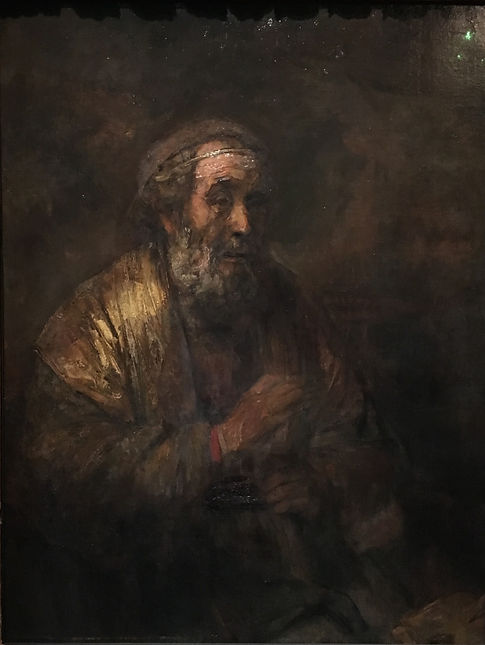
<D>
Rembrandt portrait (second visage): *
portrait by Rembrandt. Note the thick applications of red paint which are only suggestive of clothing when put in context. If the clothes were shown without the rest of the portrait to compliment them the viewer would have no idea what they were looking at! Only when put in the context of a portrait can the mind’s eye truly see and understand each aspect of the painting. The result is an intimate & personal connection with the artist.
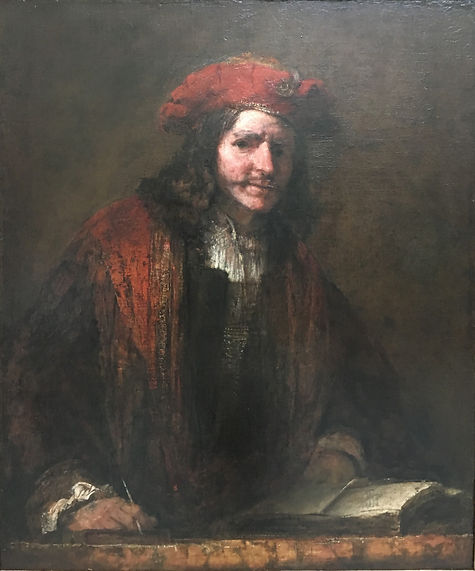
<E>
Corot ("paysage intime"): *
a great exponent of 19th century French landscape painting, best known for the luminous clarity of his work; critics valued his plein-air style for their "germ of Impressionism", their faithfulness to natural light & avoidance of academic values. Several decades later, Impressionism revolutionized art by a taking a similar approach—quick, spontaneous painting done out-of-doors. However Corot was no Impressionist. Whereas the former employed rapidly applied, un-mixed colours to capture light & mood, Corot mixed & blended his colours to get his dreamy effects. He approached landscapes more traditionally than Impressionists. His palette was restrained, dominated with browns & blacks (forbidden by Impressionism), along with dark and silvery green. His brush stroke was controlled & careful, though appearing rapid & spontaneous. His compositions well-thought out & rendered as simply & concisely as possible, heightening the poetic effects. His subjects were traditional. Although a proponent of plein-air studies, he was a studio painter; few of his finished landscapes were completed outdoors. His emphasis on drawing images from the imagination and memory rather than direct observation was in line with the tastes of the Salon jurors, of which he was a member.
BELOW Orpheus Leading Eurydice from the Underworld (1861)

<F>
stone age (cave paintings): *
BELOW LEFT- Lascaux Cave- a section of the "Hall of the Bulls" (dating from 17,000 BC) BELOW RIGHT detail painting of an aurochs, at Lascaux
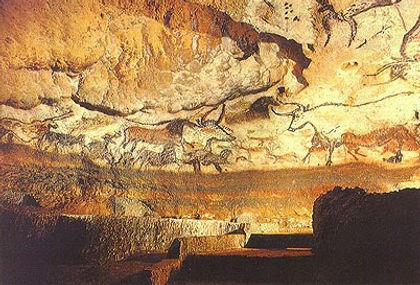
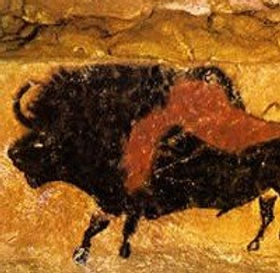
<G>
wall paintings (Pompeii): *
BELOW LEFT-The Fifth Nural Fresco depicting a Bacchian rite, Pompeii
BELOW RIGHT-Fourth Style fresco- the Sacrifice of Iphigenia (from the House of the Tragic Poet) Pompeii. 1st century AD Iphigenia is dragged to the altar as a sacrificial offering to Artemis. On either side stand her father, King Agamemnon, and her grieving mother Clytemnestra. The scene above shows Artemis and one of her Nymphs bringing a stag to sacrifice in the girl's place.
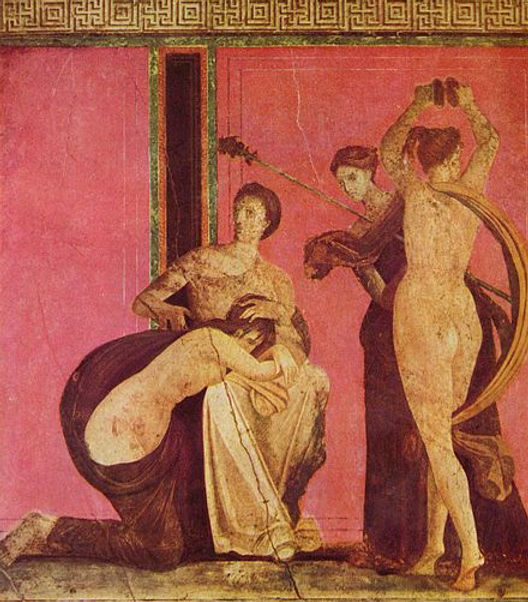
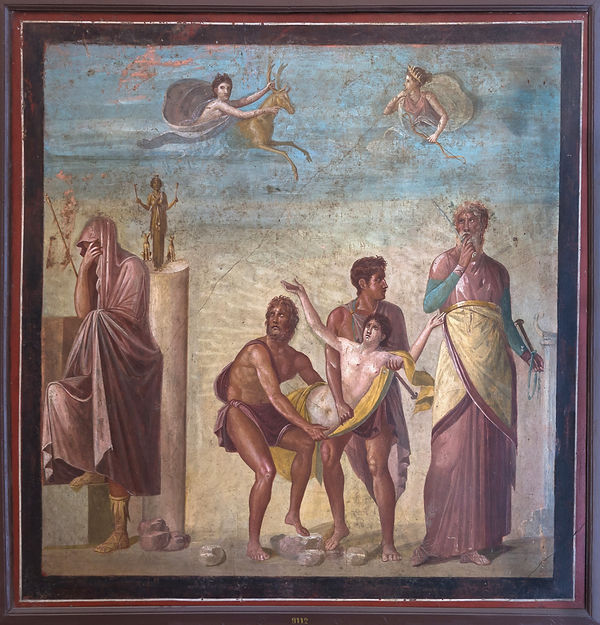
<H>
the Odyssey landscapes: *
fresco, middle 1st century BC (before 46 B.C.), 8 panels reassembled to form 4 rectangular panels. The cycle, depicting episodes from the Odyssey books 10-12, & may have adorned the upper portion of the wall of a portico. There remain 8 landscapes positioned in sequence against the background of a double colonnade viewed in perspective:
BELOW LEFT the meeting between the companions of Ulysses and the daughter of the King of the Laestrygonians
BELOW RIGHT; The Laestrygonians destroy Ulysses' fleet; Ulysses' ship, the only one spared, makes its way towards the Island of Circe, Eea )


BELOW LEFT Ulysses in the palace of Circe; possibly Ulysses' companions, retransformed from pigs to humans
BELOW RIGHT Ulysses, in the underworld, meets the shadows of the dead, then Orion, Sisyphus, Tityus and the Danaids .

